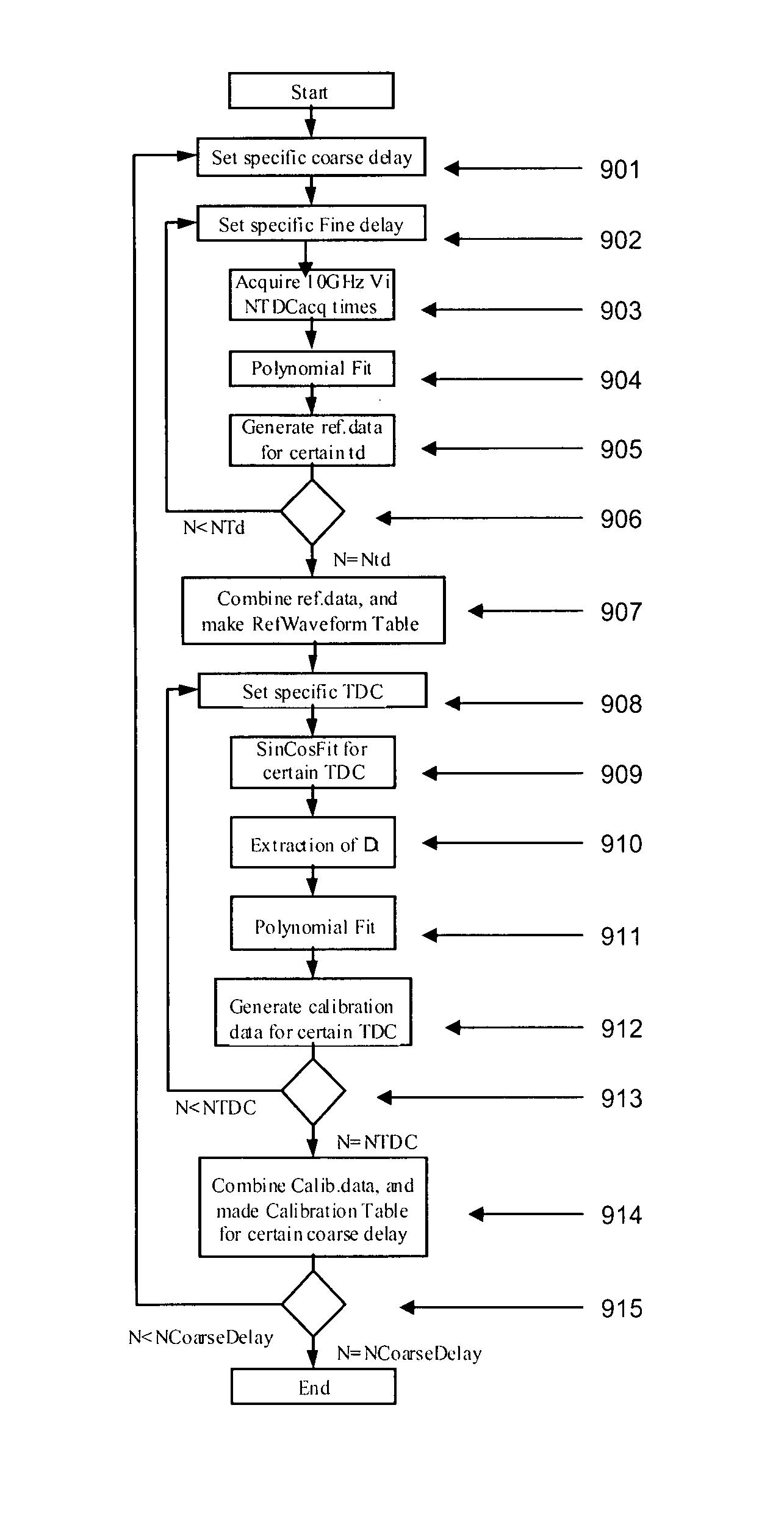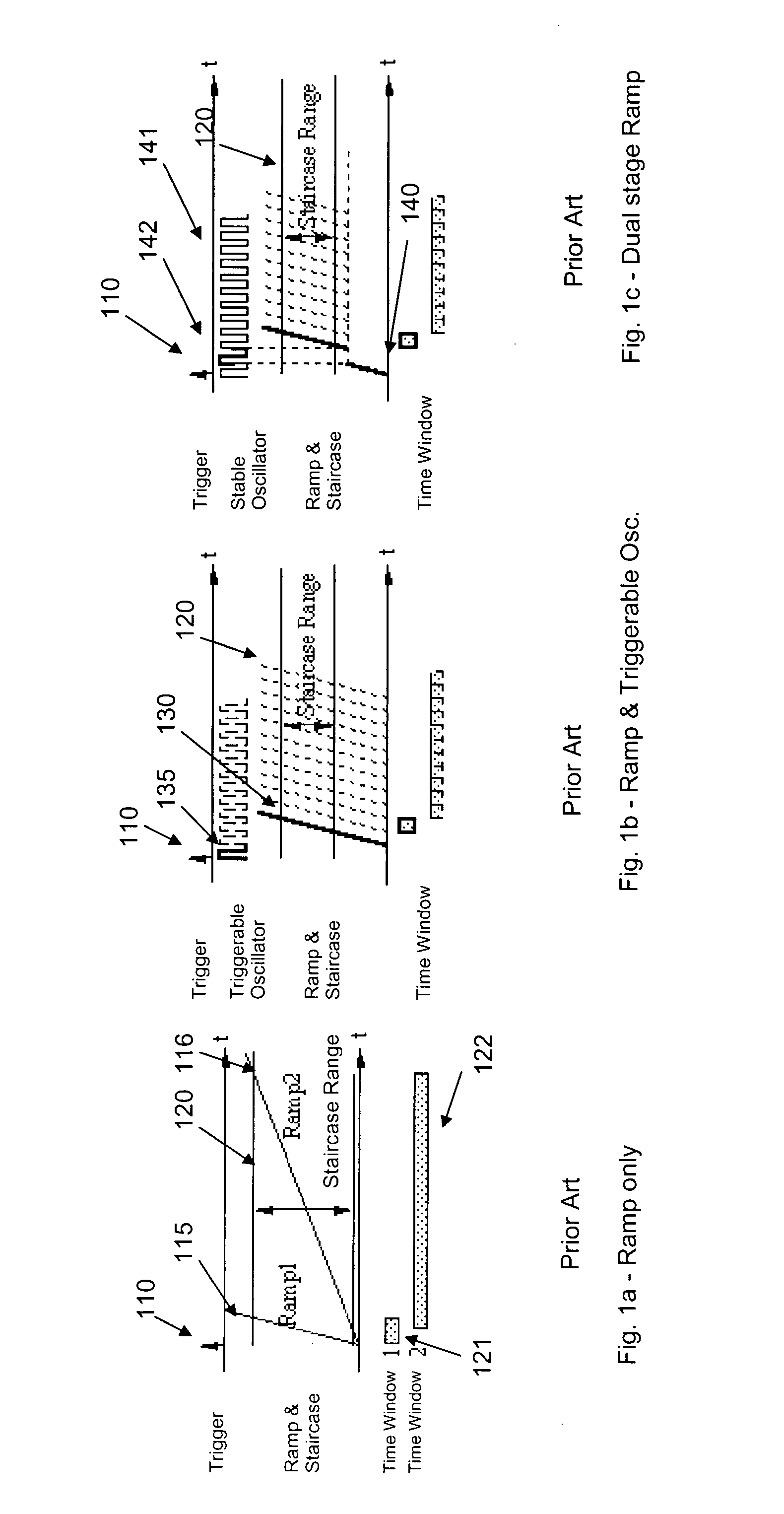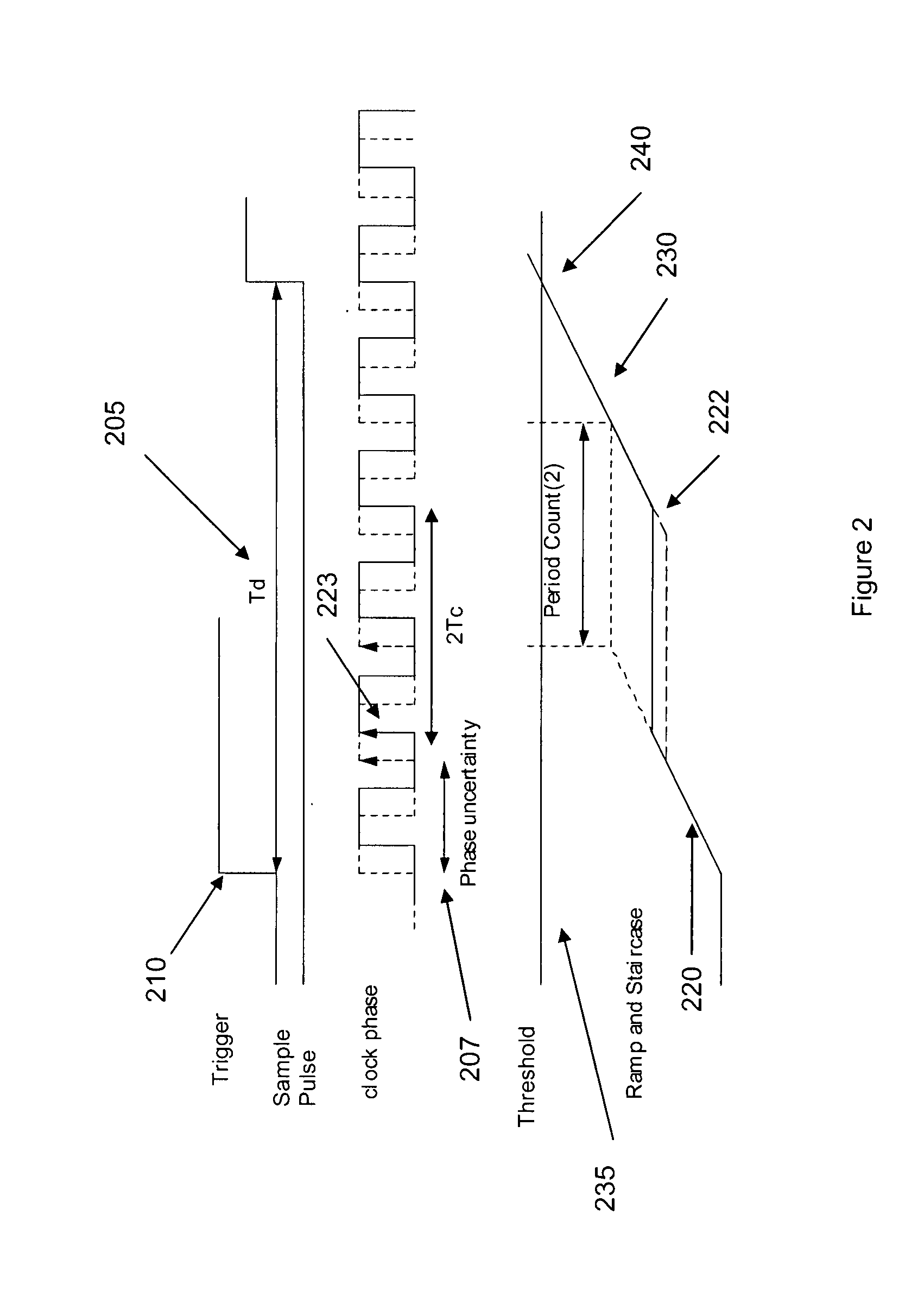Sequential timebase
a timebase and sequential technology, applied in the direction of noise figure or signal-to-noise ratio measurement, instruments, structural/machine measurement, etc., can solve the problems of reducing the deterministic jitter, the scheme is prone to many problems, and the jitter specification of such a system degrades rapidly, so as to reduce deterministic jitter and generate a long delay
- Summary
- Abstract
- Description
- Claims
- Application Information
AI Technical Summary
Benefits of technology
Problems solved by technology
Method used
Image
Examples
Embodiment Construction
[0030]One possible architecture for a Delaying Pulse Generator (DPG) employing a dual stage ramp is presented in accordance with the invention in an attempt to provide a more precise elapsed time interval Td 205. As is shown in FIG. 2, when a trigger 210 is input to the DPG of the invention, the first portion 220 of the ramp is started. The ramp is stopped and the voltage 222 thereof is held steady upon reaching a predetermined number of clock pulses 223. In a preferred embodiment, the ramp voltage increase is stopped after two clock pulses are received. Of course, this could be any desired number of clock pulses selected to accommodate the ramp voltage slope, however, two or three clock pulses are preferred to reduce jitter. The important consideration is that the ramp stops synchronous with a clock pulse. The final value 222 of the first ramp 220 corresponds to a time difference between the trigger and designated clock pulse, which may be determined in accordance with a well known...
PUM
 Login to View More
Login to View More Abstract
Description
Claims
Application Information
 Login to View More
Login to View More - R&D
- Intellectual Property
- Life Sciences
- Materials
- Tech Scout
- Unparalleled Data Quality
- Higher Quality Content
- 60% Fewer Hallucinations
Browse by: Latest US Patents, China's latest patents, Technical Efficacy Thesaurus, Application Domain, Technology Topic, Popular Technical Reports.
© 2025 PatSnap. All rights reserved.Legal|Privacy policy|Modern Slavery Act Transparency Statement|Sitemap|About US| Contact US: help@patsnap.com



